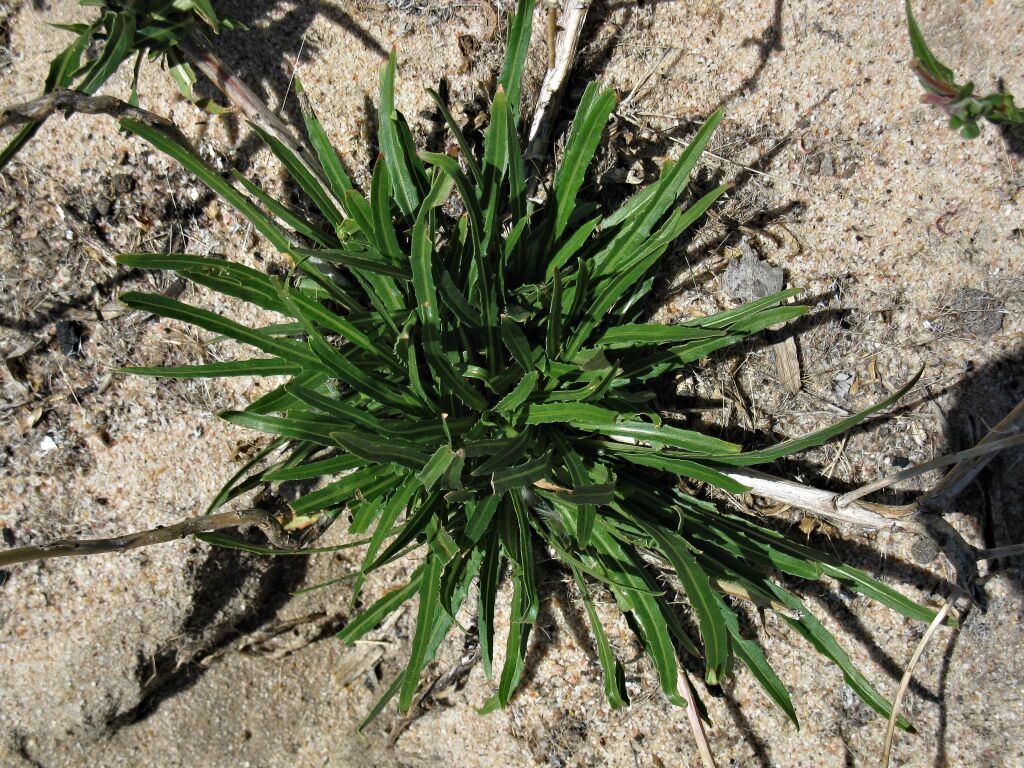Oenothera stricta subsp. stricta
Common Evening-primroseErect annual or biennial herb, to 1 m high; main stem simple or branched, lateral stems curved. Basal leaves rosetted, oblanceolate, 10–15 cm long, 3–10 mm wide, sessile, margins with widely spaced serrations or teeth, base often long-attenuate, midrib conspicuous; cauline leaves lanceolate, 3–8.5 cm long, 3–12 mm wide, sessile, margins shallowly toothed, upper leaves short and broad-based, bract-like. Flowers actinomorphic, opening near sunset and fading by morning, single, sessile, in upper leaf axils; hypanthium 2–4.5 cm long; sepals lanceolate, 15–19 mm long, often failing to separate completely, bent to one side; petals 1.5–3 cm long, yellow, sometimes red-based, becoming wine-red on ageing. Capsule more or less cylindric, broader in upper part, 3–4 cm long, 3–4 mm wide, sparsely villous, dehiscing mainly at apex. Flowers mostly Aug.–Jan.
LoM, MuM, Wim, GleP, VVP, VRiv, MuF, GipP, OtP, WaP, Gold, CVU, DunT, NIS, EGL, EGU, HSF. Naturalised in all States. Widespread through lowland parts of Victoria particularly on sandy soils, mostly on roadsides, railway verges or in weedy riparian vegetation.
Willis (1973) uses the misspelt epithet striata for this species.
Jeanes, J.A. (1996). Onagraceae. In: Walsh, N.G.; Entwisle, T.J., Flora of Victoria Vol. 3, Dicotyledons Winteraceae to Myrtaceae, pp. 930–942. Inkata Press, Melbourne.
 Spinning
Spinning

